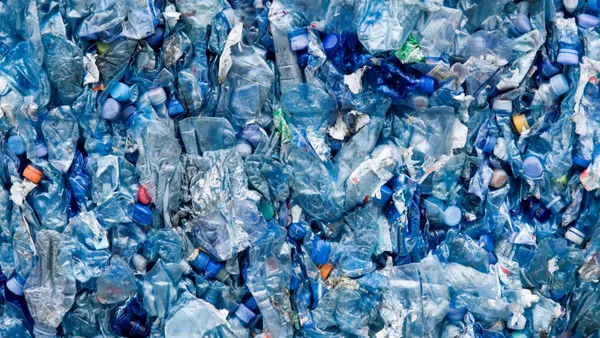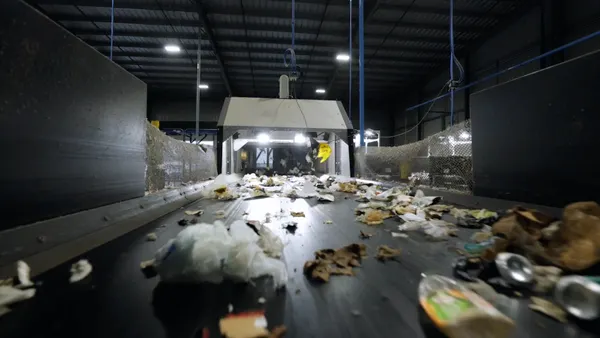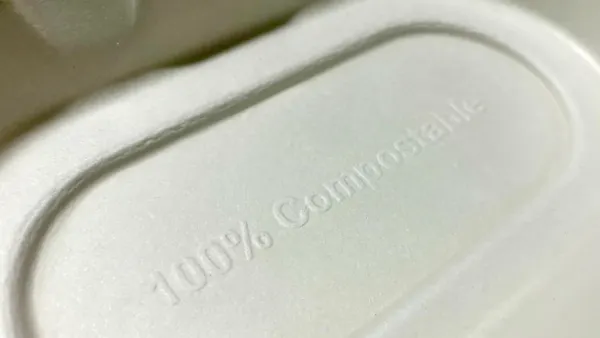Dive Brief:
- Establishing new and updated container deposit return systems at a state and national level is the “most impactful” solution for raising aluminum beverage can recycling rates, a new report from the Container Recycling Institute asserts.
- Recycling rates for aluminum used beverage cans have decreased in recent years, in part due to a lack of recycling access, lower participation and operational challenges at MRFs and secondary melters, the CRI report says. The national recycling rate for UBCs in 2021 was 37.2%, the report says.
- CRI advocates for a combined strategy to update existing bottle bill laws and establish new programs in numerous states. It also calls for establishing a national container deposit law, which the report says would boost the national recovery rate for UBCs to 85%. Such actions could form “a high performing, transparent recycling system,” said Susan Collins, CRI’s president.
Dive Insight:
CRI and other organizations have been advocating for improvements to bottle bills for years, in part to collect more cans for domestic manufacturing inputs. The U.S consumes more than one-quarter of all aluminum cans worldwide, but its recycling rate is “dramatically lower” than some peer countries, the report says.
“It is imperative that the domestic aluminum can industry improve its recycled content status, because the global aluminum can industry simply cannot meet its sustainability goals without such improvement,” Collins said.
The new CRI report echoes some themes in a separate report from the Aluminum Association and Can Manufacturers Institute, published in December, which highlighted UBC recycling rate declines due in part to lack of infrastructure improvements, among other factors. “There haven’t been many changes in the fundamentals of the U.S. recycling system,” said Scott Breen, senior vice president of sustainability at CMI, in a December interview.
CMI and AA calculated the 2023 recycling rate to be 43%, a decline from the average of around 52% when the groups began tracking rates in 1990. The new CRI report notes it calculates annual rates slightly differently, but it agrees rates are falling.
While the CMI and AA report acknowledged that both bottle bills and extended producer responsibility laws could help improve recycling rates, CRI’s new report considers bottle bills to be the “gold standard” for raising UBC recycling rates.
Container deposit return systems are capable of recycling greater numbers of UBCs because “beverage cans on deposit are handled and sorted differently than those in curbside systems,” CRI said in a news release about the report. “Cans are kept as separate commodities throughout the DRS process, meaning they are not mixed with other materials, resulting in clean, high-quality UBCs more likely to be made into new containers.”
The CRI report says program improvements in the 10 states with existing bottle bills could raise the national aluminum UBC recycling rate by 3.2 percentage points. Raising deposit values from 5 to 10 cents is one of the organization’s longtime recommendations.
The report also calls for implementing new laws in every state that has introduced bottle bill legislation since 2021: Texas, Florida, Pennsylvania, Illinois, North Carolina, New Jersey, Washington, Maryland, New Hampshire and Rhode Island. Combined, programs in these states could collect about 339,000 more tons of aluminum beverage cans per year, potentially raising the national UBC recycling rate by 20 percentage points, CRI said.
So far in 2025, several states on that list have reintroduced bottle bill legislation, including Texas, Washington and Maryland. Washington, D.C., has also introduced a bill this year.
The report also recommends focusing on passing bottle bill legislation in the 10 highest-population states that don’t currently have container deposit laws: Texas, Florida, Pennsylvania, Illinois, Ohio, Georgia, North Carolina, New Jersey, Virginia and Washington.
Though CRI also advocates for a national bottle bill, experts’ attention is mainly on state efforts, especially as Congress and the U.S. EPA react to shifting national priorities laid out by the new Trump administration. Even at the state level, bottle bills are notoriously difficult to pass, and some recycling facility operators say the legislation hurts MRF revenue.
The CRI report also acknowledges that some Americans face hurdles to recycling, such as a lack of access to curbside recycling programs. CRI says only 55% of aluminum UBCs in the U.S. are put in curbside bins or redeemed through a container deposit law. “The remaining 45% are either trashed (and ultimately sent to a landfill or incinerated) or littered,” according to the report’s executive summary.
CRI calls for more research into how well MRFs are able to sort and recover UBCs. CRI estimates between 25% and 33% of aluminum beverage cans are missorted at MRFs. But it acknowledges that more data is needed, and that it is “not aware” of any national studies on aluminum losses at MRFs.
This story first appeared in the Waste Dive: Recycling newsletter. Sign up for the weekly emails here.










